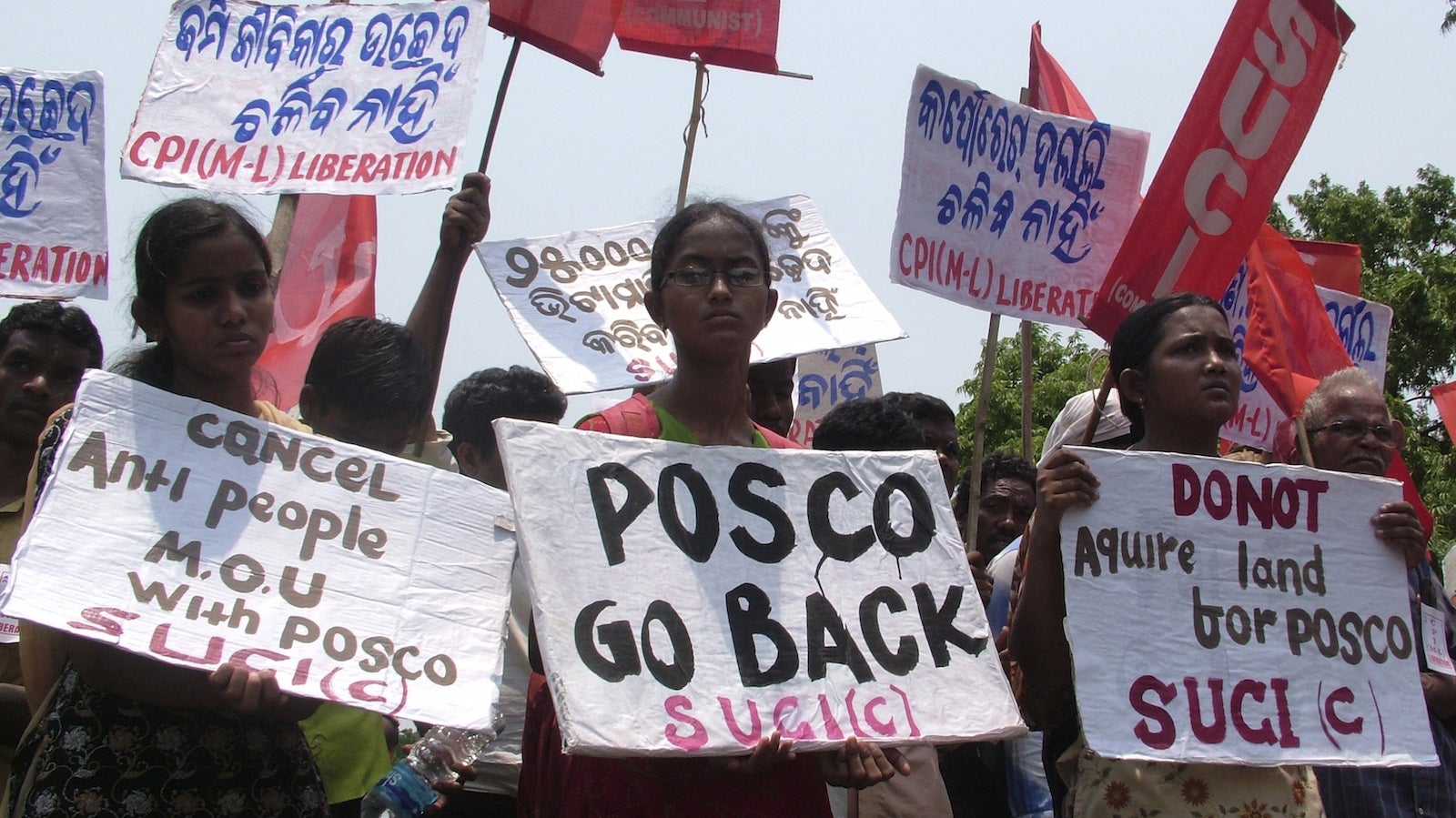Timeline: How India’s largest foreign investor decided to pull back
Even the darling among investors could not salvage India’s largest foreign-funded project.


Even the darling among investors could not salvage India’s largest foreign-funded project.
For Narendra Modi, who swept the Indian elections last year promising to revive the country’s business climate, it was always going to be a difficult task to get South Korea’s Posco—the world’s fourth largest steelmaker by output—to start operations on its steel project in the mineral rich state of Odisha.
Posco India’s project has already been delayed for ten years, as it has been struggling to get regulatory clearances from various agencies. The steelmaker has also been grappling with protests from villagers and environmental activists since 2005.
“The project reportedly threatens to displace over 22,000 people in the Jagatsinghpur district, and disrupt the livelihoods of many thousands more in the surrounding area,” a panel of human rights experts at the United Nations had said in 2014.
On March 27, media reports suggested that the steelmaker is likely to walk away from the $12 billion project—the single largest foreign investment in India.
For Modi though, Posco’s decision couldn’t have come at a worse time.
Earlier this month, his government had decided to seek $1.6 billion (Rs10,250 crore) from Cairn Energy as taxation dues, which has already hampered sentiments from foreign investors.
Here is how it all unfolded for Posco over the past ten years.
June 2005: Posco signs a memorandum of understanding (MoU) with Odisha government to set up a 12-million-tonne steel plant on a 4,004-acre plot. Later, the company decides to scale it down and seek 2,700 acres of land—almost five times the total area of Monaco—to set up an 8-million-tonne per annum project.
August 2005: The Posco Pratirodh Sangram Samiti (PPSS), which means posco opposition protest association, is formed. The body consists of villagers who are to be displaced from the project site.
September 2006: Posco applies for an environmental clearance for a captive port and gets the nod in May 2007.
April 2007: A year later, Posco receives environmental clearance for a captive power-cum-steel plant. The Odisha government also seeks approval from the environment ministry for diversion of 1,253 hectares of forest land to Posco.
August 2008: India’s top court upholds “in principle” clearance for use of forest land for the project. A year later, the environment ministry decides to grant clearance for diversion of forest land.
January 2010: The environment ministry informs the Odisha government that the final approval for the diversion of forest land is conditional and depends on the settlement of the rights of forest dwellers. In turn, the state government tells the ministry that there aren’t any traditional forest dwellers.
May 2010: Around 30 people are injured in clashes between police and the members of the PPSS. The clashes occur when the police forcibly try to move protestors from the project site.
July 2010: An Odisha high court cancels mining lease for an iron ore mine to Posco and the state government decides to challenge it in the Supreme Court of India. The high court ruling comes after another company, Geomin Minerals, objects to the state government’s decision to award the project to Posco.
January 2011: Final environment clearances for the project comes nearly six years after it was first mooted. But a petitioner files a case at the National Green Tribunal(NGT) challenging environmental clearance to Posco.
December 2011: Violence erupts in Jagatsinghpur after the state government decides to construct a coastal road. One person is killed and 25 others injured.
March 2012: A week after the then prime minister Manmohan Singh assures the South Korean government that the project will sail through, India’s NGT suspends the environment clearance.
“A project of this magnitude, particularly in partnership with a foreign country, has been dealt with casually without there being any comprehensive scientific data regarding the possible environmental impacts,” the tribunal bench said. The tribunal was set up in 2010 to expeditiously dispose off cases relating to environmental protection and conservation of forests.
May 2013: India’s top court strikes down the Odisha high court order. It asks the central government to decide on granting the mine to Posco.
July 2013: Odisha completes acquisition of 2,700 acres of land for the project.
Jan 2014: The environment ministry once again gives the final green clearance for the plant, with specific conditions. Singh assures the company about the project, just days ahead of a visit by South Korean prime minister Park Geun-hye.
June 2014: The Odisha government asks the new government at the centre to fasten the approvals for granting mining licences to Posco. Jual Oram, India’s new tribal affairs minister under Modi, says that he will not allow that. Oram has been at the forefront of the protests in the districts.
March 2015: News agency Bloomberg reports that the company may finally walk away from the project in India and that six of its 13 top employees have quit the project already.